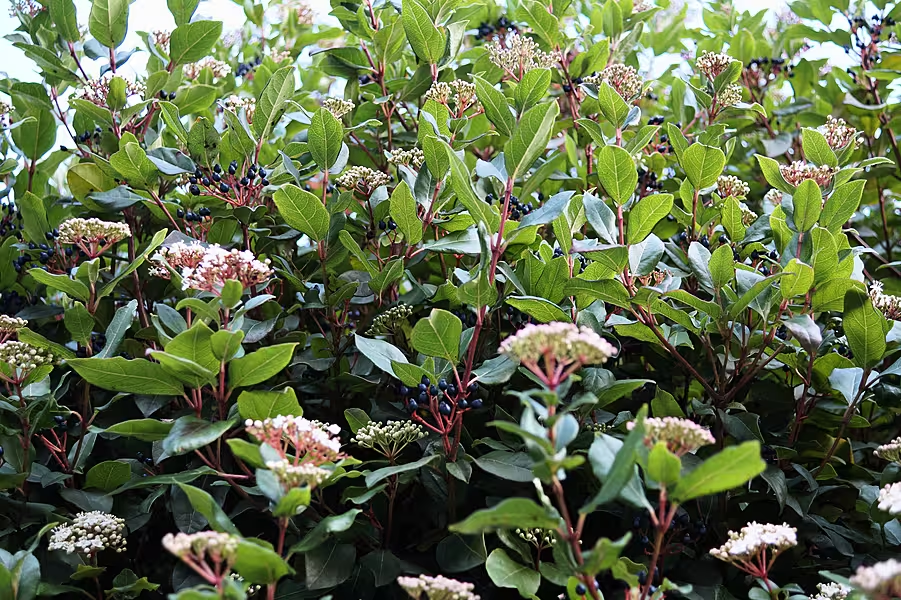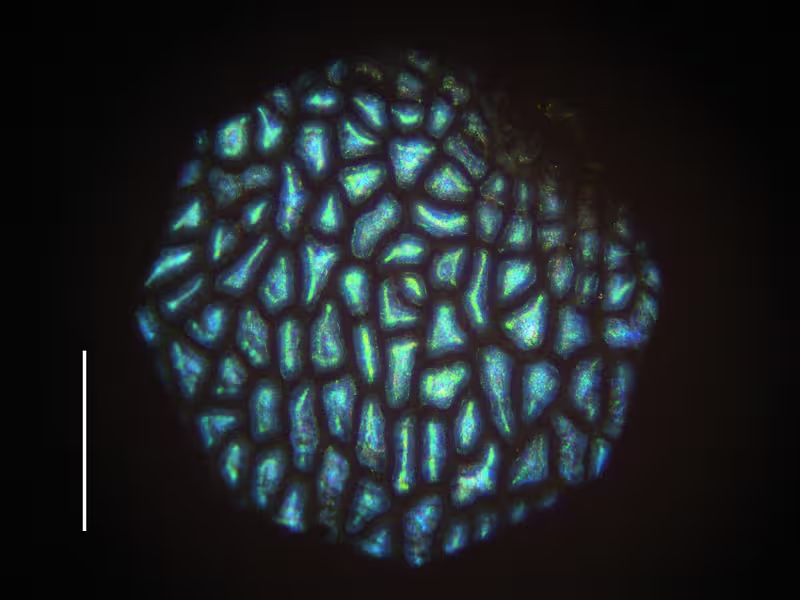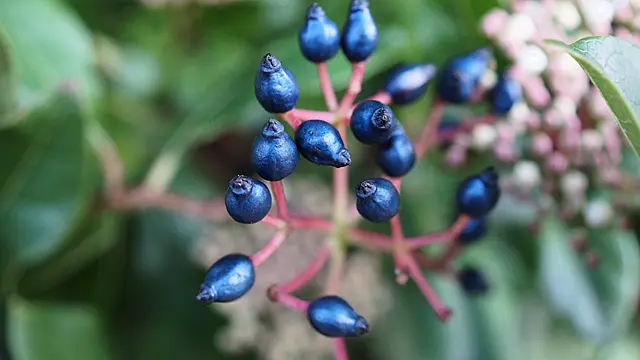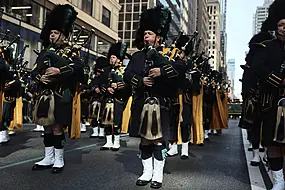In a study which included experts from Cambridge University, researchers have found that this metallic blue fruit, which serves as a nutritious treat for birds, does not solely rely on pigment for its colour.
Instead, the V. tinus fruit uses a phenomenon known as structural colour to reflect blue light, much like the brilliant hues produced in peacock feathers.
According to the researchers, the striking blue colour of the fruit comes from the tiny structures made up of fats, or lipids.
They say it is the first time such a structure has been found to incorporate lipids.
The research is published in the journal Current Biology.

Study author Dr Miranda Sinnott-Armstrong, a researcher at the University of Colorado-Boulder, said: “The metallic sheen of the Viburnum fruits is highly unusual, so we used electron microscopy to study the structure of the cell wall.
“We found a structure unlike anything we’d ever seen before: layer after layer of small lipid droplets.”
While most colours found in the natural world are a result of pigments, there are a few rare exceptions.
For example, peacock feathers, scales of butterflies, and bodies of jewelled beetles, get their colour from their internal structure.
Structural colour arises through the reflection of light from complex, multi-layered nanostructures producing iridescence, where the colour appears to change depending on the angle of view.
While structural colour is common in certain animals, the researchers say only a handful of plant species have been found to have structurally coloured fruits.
Dr Sinnott-Armstrong said: “This means that V. tinus, in addition to showing a completely novel mechanism of structural colour, is also one of the few known structurally coloured fruits.”

The lipid structures are present in the cell wall of the outer skin of the V. tinus fruit, below which lie a layer of dark red anthocyanin pigments.
According to the researchers, any light that is not reflected by the lipid structures is absorbed by the dark red pigment beneath, which prevents any backscattering of light and makes the fruits appear even more blue.
They believe the combination of bright blue colour and high nutritional content is an “honest signal” that makes V. tinus fruits an “irresistible treat” for birds.
According to the researchers, this is also mutually beneficial to the V. tinus plants as it increases the spread of their seeds and contributes to the plant’s success.
Dr Sinnott-Armstrong said: “Honest signals are rare in fruits as far as we know.
“If the structural colour of Viburnum tinus fruits are in fact honest signals, it would be a really neat example where colour and nutrition come at least in part from the same source: lipids embedded in the cell wall.
“We’ve never seen anything like that before, and it will be interesting to see whether other structurally coloured fruits have similar nanostructures and similar nutritional content.”







